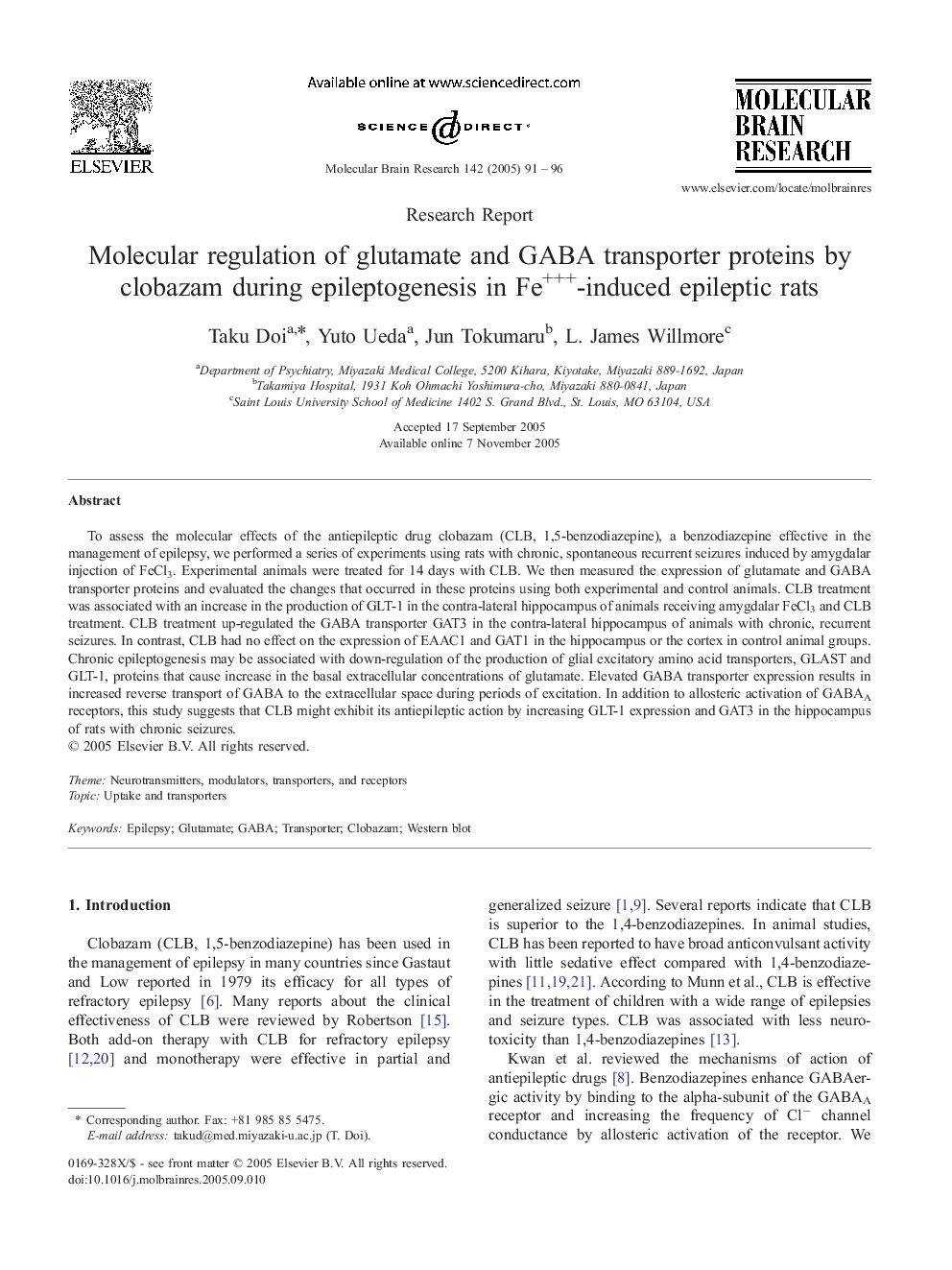| Article ID | Journal | Published Year | Pages | File Type |
|---|---|---|---|---|
| 9410516 | Molecular Brain Research | 2005 | 6 Pages |
Abstract
To assess the molecular effects of the antiepileptic drug clobazam (CLB, 1,5-benzodiazepine), a benzodiazepine effective in the management of epilepsy, we performed a series of experiments using rats with chronic, spontaneous recurrent seizures induced by amygdalar injection of FeCl3. Experimental animals were treated for 14 days with CLB. We then measured the expression of glutamate and GABA transporter proteins and evaluated the changes that occurred in these proteins using both experimental and control animals. CLB treatment was associated with an increase in the production of GLT-1 in the contra-lateral hippocampus of animals receiving amygdalar FeCl3 and CLB treatment. CLB treatment up-regulated the GABA transporter GAT3 in the contra-lateral hippocampus of animals with chronic, recurrent seizures. In contrast, CLB had no effect on the expression of EAAC1 and GAT1 in the hippocampus or the cortex in control animal groups. Chronic epileptogenesis may be associated with down-regulation of the production of glial excitatory amino acid transporters, GLAST and GLT-1, proteins that cause increase in the basal extracellular concentrations of glutamate. Elevated GABA transporter expression results in increased reverse transport of GABA to the extracellular space during periods of excitation. In addition to allosteric activation of GABAA receptors, this study suggests that CLB might exhibit its antiepileptic action by increasing GLT-1 expression and GAT3 in the hippocampus of rats with chronic seizures.
Keywords
Related Topics
Life Sciences
Neuroscience
Cellular and Molecular Neuroscience
Authors
Taku Doi, Yuto Ueda, Jun Tokumaru, L. James Willmore,
